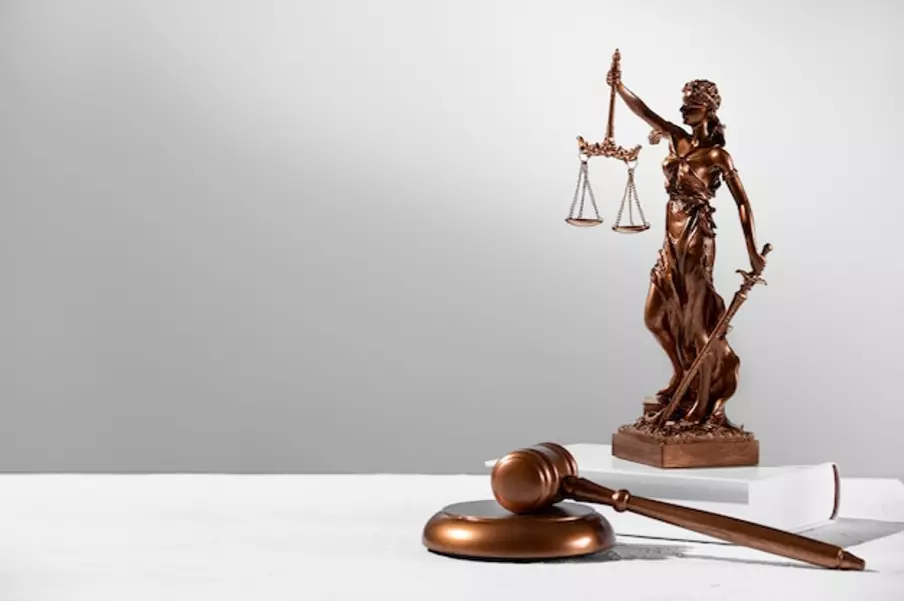The Legal Process for Resolving Car Accident Disputes in Small Claims Courts Across the USA

A small claims court is a great option for recovering moderate financial losses (each state has a dollar limit) caused by a car accident, especially when dealing with uninsured drivers or situations where the insurance companies aren't offering a fair settlement.
Your chances of success at a small claims court depend on how well you present your case. To get maximum compensation, you need to hire a lawyer who can efficiently navigate the legal process of resolving car accident disputes in small claims courts across the USA.
How Do Small Claims Courts Work?
Small claims courts are designed to provide a simplified and accessible forum for resolving minor civil disputes, typically involving relatively small sums of money. Small claims court is for disputes involving smaller amounts of money, typically capped between $2,500 and $25,000 depending on your state.
One of the defining characteristics of a small claims court is its streamlined and informal nature. The proceedings are less rigid compared to traditional court settings.
Unlike regular courts, small claims courts are more relaxed.
Before initiating a small claims case, it's crucial to assess whether this forum is appropriate for your car accident dispute. Here are some key considerations:
- Damage Amount: First things first, the amount you want back (property damage, medical bills, lost wages from the accident) needs to be within the limit your state sets for small claims court.
- Uninsured Drivers: If the driver who caused the accident doesn't have insurance, small claims court is a great way to try and get the money you deserve.
- Insurance Disagreements: Even if everyone has insurance, things can get messy. Maybe your insurance company denies your claim or offers you way less than you think you deserve. A small claims court lets you fight them and argue for a fair settlement.
- Case Complexity: A small claims court works best for accidents that are clear-cut – there's no doubt who's to blame and the evidence is straightforward. If it's a complicated situation with multiple cars, serious injuries, or a big fight about who's at fault, you might be better off going to regular court with a lawyer by your side.
Steps for Filing and Resolving Claims in Small Claims Courts
Here are the steps for filing your car accident claims in a small claims court:
Initial Inquiry
Contact your local courthouse or visit their website to obtain information on filing procedures, jurisdictional limits, and required court forms.
Many courts offer self-help resources and guides specifically tailored to small claims cases, including any type of car accident dispute, such as T-bones.
Gathering Evidence
Collect all relevant documentation to support your claim. This includes police reports, accident scene photos, repair estimates, medical bills, witness statements, and any correspondence with the at-fault driver's insurance company. The stronger your evidence, the more persuasive your case will be to the judge.
Filing the Complaint
Complete the necessary court forms outlining your claim, including the defendant's name and address, the amount of compensation sought, and a concise description of the accident and your injuries.
Filing fees typically apply, though some states may offer fee waivers based on financial hardship.
Serving the Defendant
Once the court accepts your complaint, you'll need to have the defendant served with a copy of the paperwork. This is typically done by a process server, a certified individual authorized to deliver legal documents. Proof of service is crucial for the court to proceed with your case.
Pre-Trial Conference (Optional)
Some courts may schedule a pre-trial conference to encourage settlement discussions between the parties. This can be a valuable opportunity to avoid a formal hearing and potentially reach a mutually agreeable resolution.
Hearing
If a settlement is not achieved, a hearing date will be set before a judge. Here, you will present your case, introduce your evidence, and potentially cross-examine the defendant if they choose to appear and contest your claim.
The judge will ultimately determine fault and issue a judgment for the amount they deem appropriate, considering the evidence presented by both parties.
Collecting the Judgment

If the judge rules in your favor, the defendant is legally obligated to pay the awarded amount. However, collecting the judgment can sometimes be challenging. The court may offer resources to assist with this process, such as wage garnishment or liens on the defendant's property.
Wrapping Up
You have the legal right to represent yourself in a small claims court. However, your lack of expertise might stand in the way of you getting the maximum compensation that you deserve. If the laws in your jurisdiction allow it, hire a competent lawyer to fight in your stead.
More to Read:
Previous Posts:


